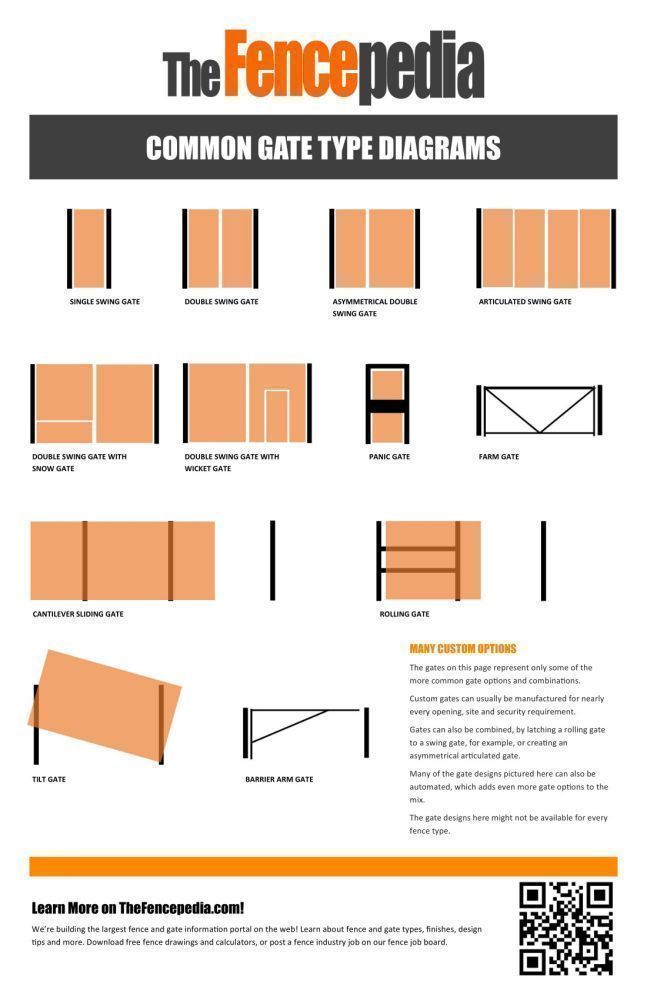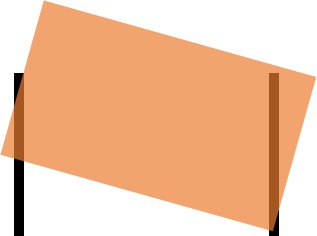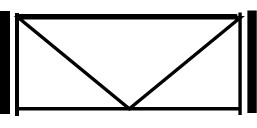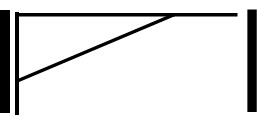
Common Types of Gates and Gate Designs
Every site and fence is slightly different, and one of the biggest variants is the type of gates that are required for the site.
Gate types differ by size, material and operation (manual or automated); however, there are some common types of gates and gate designs that can be used to create gates for many different fence types and site requirements. Let’s take a closer look at those gate types, how and where they are commonly used, and other general information to help you choose the right gates for your project.
 |
Single Swing GatesSingle swing gates, also known as single leaf gates, pedestrian gates or man gates, are narrow gates with a single gate panel that is hinged on one side and latches on the other. Single swing gates come in a huge range of designs and sizes and can be built to match nearly any type of fence. They are also used on every type of site, from residential properties to higher security or commercial facilities. While the height of single swing gates can vary greatly, they are most commonly about 3 or 4 feet or 900mm to 1200mm wide – although some single leaf gates can be as much as 10 feet or about 3 meters wide! |
|
 |
Double Swing GatesDouble swing gates, sometimes also known as double leaf gates, driveway gates, or vehicle gates, are also one of the most common types of gates, and they are available to match every kind of fence you can think of. These gates are often wider, sometimes up to 20 feet or 6 meters wide, and are usually used for vehicular access to a residential, commercial or high-security site. Double swing gates are hinged at both gate posts, and they latch in the middle, often with a drop bolt or cane bolt on one or both gate panels, to allow the gates to be held in place when open and closed. |
|
 |
Asymmetrical Double Swing GatesSometimes, for various reasons, the two panels or leaves of a double swing gate cannot be the same size. Sometimes, this is because different types of access are required, but often, it’s simply because there is something that limits the swing radius of one of the leaves. Asymmetrical double swing gates are usually a special order item and are typically made after a visit to the site to take careful measurements. |
|
 |
Articulated or Concertina GatesArticulated gates or concertina gates are a special type of swing gate that has leaves that are made up of more than one hinged panel instead of the typical single panel. This allows the gates to fold up or “concertina,” which is useful when there is limited space available for the gates to swing. These types of gates are always a special order item, if available, and may require special equipment or design details. |
|
 |
Double Swing Gates with Snow GatesIn places where there is a lot of snowfall and where snow clearing is sporadic at best, many ordinary gates may be unable to swing open and closed at some times. Snow gates have an extra, latched, and independently hinged section on one or both leaves that can be opened even when the snow is very deep. This can help to make it easier to access even remote sites using the same gates. |
|
 |
Double Swing Gates with Wicket GatesA wicket gate is a small, single swing or pedestrian gate that is set into a larger gate leaf. This makes it possible for pedestrians to have access and egress without having to open the whole gate. Wicket gates can be built into double swing gates, but they are also often built into sliding gates, although extra safety measures might be required if the gates will be automated. |
|
 |
Panic GatesPanic gates are a special type of pedestrian gate or man gate that is only usable from the inside. As the name suggests, panic gates are intended for use as emergency egress gates, and they are often installed on potentially hazardous sites like chemical processing plants or substations. Most panic gates have a sturdy outer frame, and they use special panic bar hardware. Some panic gates have a key lockable option for access from the outside if required, and some also have a built-in metal “shroud” or panel that makes it more difficult to access the panic bar mechanism from the outside. |
|
 |
Sliding Gates or Cantilever GatesSliding gates or cantilever gates may have different designs depending on where they are being installed and what type of gate they are. In North America, cantilever gates are mounted onto rollers that are attached to gate posts, including an additional third post to allow the gate to slide open. They are typically at least one and a half times the opening size, which means they do need extra space to open fully. There are also single cantilever gate options as well as double cantilevers. Other parts of the world use a different type of sliding gate, which usually run on a track that is embedded in a concrete beam. This kind of sliding gate does not need the long cantilever “trailer,” but they do often use special posts called gate portals. Because they run on a track on the ground, these kinds of gates aren’t suitable for areas that have snow in the wintertime. There are many other types of sliding gates available, too, including concealed track options that use special types of lipped channel and rollers on the top or bottom of the gate, barn track sliding gates and more. |
|
 |
Rolling GatesRolling gates are another common gate option in North America. Unlike cantilever gates, they don’t have the extra long trailer and are usually only about a foot wider than the opening they are installed on. Instead of cantilever rollers or a ground beam track, these kinds of rolling gates have two tubular rails installed on the body of the fence adjacent to the gate and use special track equipment to facilitate movement. They usually also have a carrier wheel at the front of the gate. |
|
 |
Tilt Gates or Vertical Lift GatesIf space is a concern, but you want a gate that can be automated and is not a swing gate, you might want to consider tilt gates or vertical lift gates. These gates are designed to open vertically, like a boom or barrier arms, which means that they take up a much smaller footprint than swing or sliding gates. They are usually a costlier option than both of those, though, although if space is the primary consideration, they are a great solution. |
|
 |
Farm GatesFarm gates are usually designed to keep animals in or out and not for security or frequent use. Like farm fencing, this means that they are typically much lighter weight than commercial or even residential gate options. Many farm gates are simply a pipe frame with some bracing with farm fence or even twisted wire on the body of the gate. Others might be made entirely from tubing or even from lightweight wood and barbed wire. |
|
 |
Barrier Arm GatesBarrier arm gates, like the one pictured, are usually used where only vehicular traffic access needs to be blocked. They consist of an arm and some tubular bracing, and little more. Often, these kinds of gates are painted a bright color and have reflective decals to make them more visible to traffic. These kinds of gates are also often used on trails and in parks, where vehicles aren’t meant to be, but pedestrians and cyclists are welcome. |
How to Get the Right Gate for Your Site
The best way to find the right gates for your site is to speak to a fence professional, either at a company that installs fencing or at a fence manufacturing company.
Using photographs or based on site visits and on-site measurements, they should be able to tell you what the best gate solutions for your specific needs are based on budget, security, access and other considerations.
There are, of course, many gates that are available “off the shelf.” However, many more complex perimeter fence systems require gates that are custom-made for your project.
Always ask your fence company to provide sketches or shop drawings for their proposed gate design so that you can confirm the details before the gates are manufactured. There may be changes that need to be made before the gates are fit for purpose.
Don’t Forget to Mention Automation
While most common gate types can be automated, not all of them can. There are also sometimes differences between a gate that is designed for automation and one that is not. So whether you plan to automate your gates right away or want the option to retrofit them later, be sure to mention this to whoever is designing the gates for your project.
Allow Enough Time
If your project requires complex and custom gates, make sure you allow enough time for the design and manufacturing process. It can take time for gate manufacturers to generate designs and drawings for approval, and then the manufacturing process will add to that time too.
Start the gate design process earlier than you think you will need to so that you can have your gates on site in time to ensure you have a secure perimeter when you need it.
Download A Gate Cheat Sheet
We’ve created a simple cheat sheet with all of the gate styles and diagrams mentioned here so that you can choose the right type of gates for your sites a little easier. Feel free to download and share this guide with whomever you think might find it useful.
Download the Gate Types Chart
-
Gate Types Chart PDF
DownloadDownload this file FREE!
Take me to my files! ×To make sure you're a human and not a bot, please enter your email address below.


